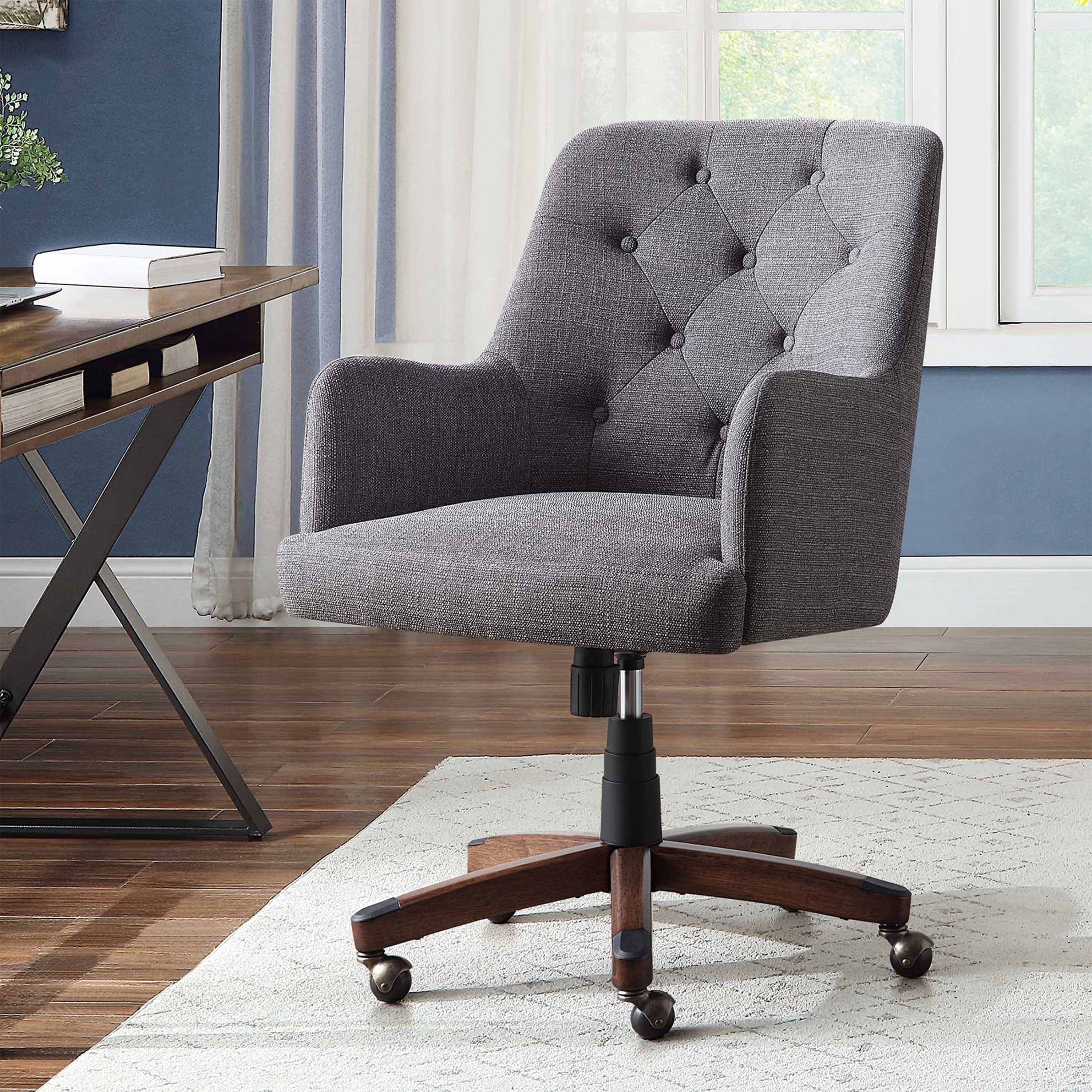Top Features of Upholstered Office Desk Chairs

Choosing the right upholstered office chair can significantly impact your comfort, productivity, and long-term health. Understanding the key features and how they contribute to ergonomics is crucial for making an informed decision. This section will delve into the top features to consider when selecting an upholstered office chair, focusing on upholstery materials, chair base types, and adjustable features.
Upholstery Material Comparison, Upholstered office desk chair
The upholstery material plays a significant role in the overall comfort and longevity of your office chair. Different materials offer varying levels of durability, breathability, and ease of maintenance. The choice often comes down to personal preference and budget.
| Material | Durability | Breathability | Maintenance | Cost |
|---|---|---|---|---|
| Leather | High; very resistant to wear and tear | Low; can retain heat and moisture | Moderate; requires regular cleaning and conditioning | High |
| Fabric | Moderate; varies greatly depending on the fabric type | Moderate to High; breathability depends on the fabric weave | Low to Moderate; most fabrics are easily cleaned | Low to Moderate |
| Mesh | Moderate; can be prone to stretching or tearing over time | High; excellent breathability keeps you cool | Low; usually easily wiped clean | Moderate to High |
Chair Base Types: Stability and Adjustability
The chair base is the foundation of your office chair, impacting both its stability and adjustability. Two common types are the five-star base and the pedestal base. Understanding their pros and cons is essential for selecting a chair that suits your needs.
Upholstered office desk chair – The choice between a five-star base and a pedestal base depends largely on personal preference and the intended use of the chair. A five-star base generally offers more stability and adjustability, while a pedestal base can be more space-saving and aesthetically pleasing.
- Five-Star Base:
- Pros: Excellent stability, typically offers 360-degree swivel, usually incorporates height adjustment mechanisms.
- Cons: Can take up more floor space compared to a pedestal base.
- Pedestal Base:
- Pros: Sleek design, space-saving, often suitable for lighter chairs.
- Cons: Can be less stable than a five-star base, may offer limited adjustability.
Lumbar Support and Adjustable Features: Preventing Back Pain
Proper lumbar support and adjustable features are crucial for maintaining good posture and preventing back pain. An adjustable chair allows you to customize its height, armrests, and tilt to perfectly fit your body and work style. Failing to adjust your chair correctly can lead to discomfort and potential long-term health issues.
A step-by-step guide to adjusting your chair for optimal ergonomics:
- Adjust the Seat Height: Your feet should be flat on the floor, with your knees bent at a 90-degree angle. The seat pan should support your thighs without constricting blood flow.
- Adjust the Lumbar Support: The lumbar support should gently curve to support the natural curve of your lower back. Adjust the height and depth of the support until you feel comfortable and supported.
- Adjust the Armrests: Your elbows should rest comfortably at a 90-degree angle when your arms are resting on the armrests. Adjust the height and width of the armrests to find a comfortable position.
- Adjust the Tilt: A slight recline can help improve posture and reduce strain on your back. Experiment with different tilt angles to find the most comfortable position for you.
